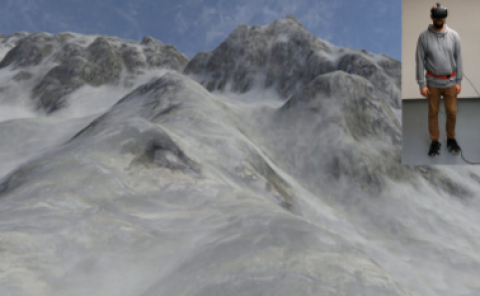Adaptive Field-of-view Restriction: Limiting Optical Flow to Mitigate Cybersickness in Virtual Reality
PubDate: Nov 2022
Teams: University of Minnesota
Writers: Fei Wu;Evan Suma Rosenberg
Abstract
Dynamic field-of-view (FOV) restriction is a widely used software technique to mitigate cybersickness in commercial virtual reality (VR) applications. The classical FOV restrictor is implemented using a symmetric mask that occludes the periphery in response to translational and/or angular velocity. In this paper, we introduce adaptive field-of-view restriction, a novel technique that responds dynamically based on real-time assessment of optical flow generated by movement through a virtual environment. The adaptive restrictor utilizes an asymmetric mask to obscure regions of the periphery with higher optical flow during virtual locomotion while leaving regions with lower optical flow visible. To evaluate the proposed technique, we conducted a gender-balanced user study (N = 38) in which participants completed in a navigation task in two different types of virtual scenes using controller-based locomotion. Participants were instructed to navigate through either close-quarter or open virtual environments using adaptive restriction, traditional symmetric restriction, or an unrestricted control condition in three VR sessions separated by at least 24 hours. The results showed that the adaptive restrictor was effective in mitigating cybersickness and reducing subjective discomfort, while simultaneously enabling participants to remain immersed for a longer amount of time compared to the control condition. Additionally, presence ratings were significantly higher when using the adaptive restrictor compared to symmetric restriction. In general, these results suggest that adaptive field-of-view restriction based on real-time measurement of optical flow is a promising approach for virtual reality applications that seek to provide a better cost-benefit tradeoff between comfort and a high-fidelity experience.



